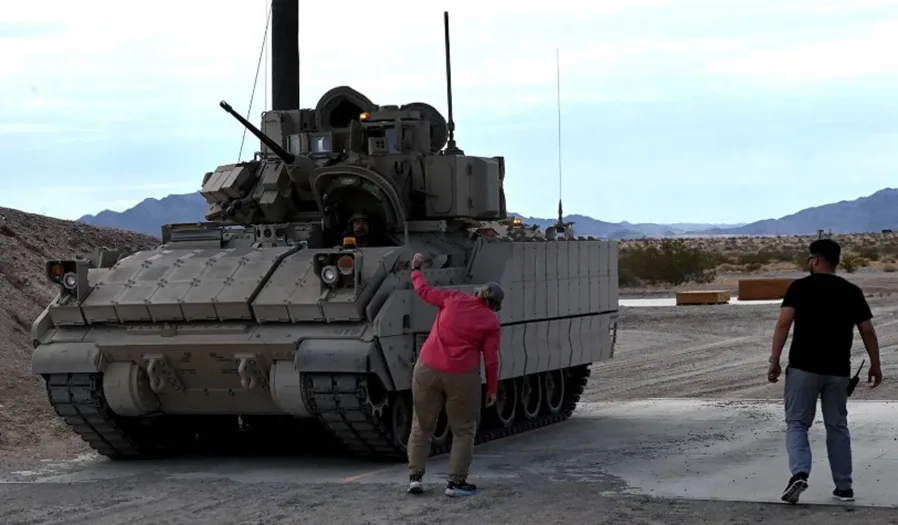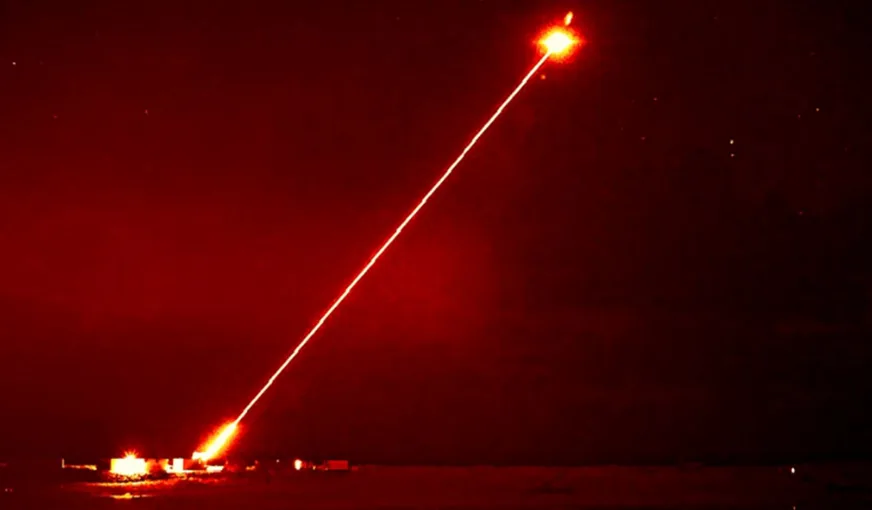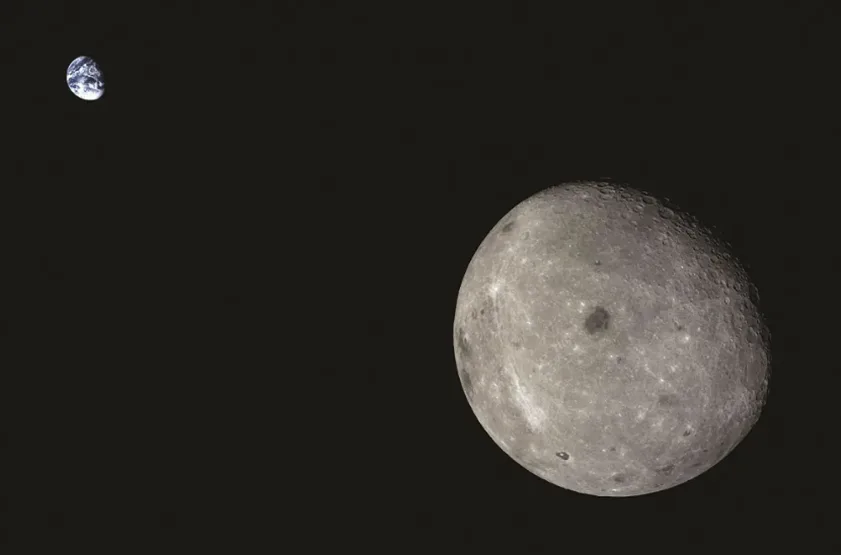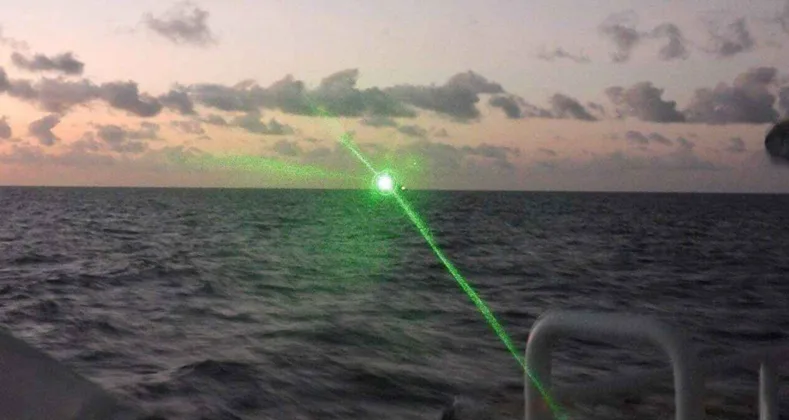This Week in Laser News – What’s Going on With HELs (Week of January 20th 2025)
This week, we have articles discussing UK giving the Ukraine lasers, Russia giving Iran lasers, China considering Laser Wireless Power Transmission, and Bradley IFVs scoring a key upgrade.
News roundup by Caleb Hoover
Sunday January 19th 2025
Article Info
This week, Army Recognition.com released an article titled “US Army Enhances Bradley IFV Protection Capabilities with New Laser Detection System”
Article Summary
The U.S. Army recently advanced the capabilities of the Bradley Infantry Fighting Vehicle (IFV) at U.S. Army Yuma Proving Ground (YPG). A production qualification test (PQT) evaluated the Vehicle Protection System Base Kit (VBK), featuring 360° sensors around the Bradley’s turret. These sensors detect incoming laser threats and provide real-time updates to vehicle commanders via the Commander’s Independent Viewer (CIV), enabling them to identify and respond to targeting threats.
The PQT tested the Bradley over a demanding 6,500-mile course across challenging terrain, including washboard road surfaces, while integrating live-fire events to demonstrate the effectiveness of its upgraded counter-threat systems.
Article image: Recently, U.S. Army Yuma Proving Ground personnel conducted a production qualification test on the Vehicle Protection System Base Kit (VBK) installed on the Bradley IFV. The system uses sensors on the turret corners to provide 360-degree detection of incoming laser threats. (Picture source: U.S. Army)

Monday January 20th 2025
Article Info
MSN.com has an article from December 2024 that showed up in my Google Alerts by Lilina Oleniak titled “UK considers possibility of sending Ukraine laser weapons prototype – Defense Ministry”.
Article Summary
The article explores UK Defense Minister Grant Shapps’ comments on the possibility of sending Ukraine a prototype of the DragonFire laser weapon. Minister Shapps is critical of the project’s expense, labeling DragonFire the “biggest waste of money in defense.” He attributes this critique to the lengthy developmental timeline common to such systems, reportedly stretching up to 10 years. Shapps advocates for accelerating the process to enable DragonFire’s deployment on ships or land sooner.
This raises an intriguing question: Could this article be connected to previous reports, such as those in our December 16th round-up on Ukraine’s Tryzub laser system? Is the Tryzub potentially a prototype DragonFire supplied by the UK?
Image caption: A picture of the DragonFire laser during a test in the UK

Monday JaNUary 20th 2025
Article Info
Imperial College London has an article by Michael Backhouse and Dr. Nicholas Dover titled “New laser technique reveals how plasma instabilities can spaghettify electrons”.
Article Summary
In space and in experiments, charged particles like ions and electrons often travel through a state of matter called plasma, which is like a super-hot, electrically charged soup. Surprisingly, even if the particles and plasma start out evenly spread, they can create their own magnetic fields, causing the plasma to clump into thin, spaghetti-like strands called filaments. This phenomenon, known as the Weibel-like current filamentation instability, can cause problems in experiments involving plasma-based particle accelerators or fusion energy research, but it’s very hard to study in a lab.
For the first time, researchers from Imperial College London, Stony Brook University, and Brookhaven National Laboratory observed this process directly in a controlled lab experiment. They used a powerful laser at Brookhaven’s Accelerator Test Facility. This special carbon dioxide laser emits long-wave infrared light, which works well in low-density plasmas where this filamentation effect is likely to occur.
Here’s how they did it:
1.The laser created fast-moving electrons in the plasma.
2.They used a second laser to observe how the plasma reacted to those electrons.
3.They saw the plasma form thin strands (filaments), confirming what theories had predicted.
By changing the plasma’s density, they noticed the size of the filaments also changed as expected. This breakthrough helps scientists better understand how this instability works and may allow them to control it when building advanced particle accelerators or new types of fusion reactors.
TUesday January 21st 2025
Article Info
SpaceNews.com published an article by Andrew Jones this week titled “China explores using orbiting lasers to power spacecraft on the moon”
Article Summary
China is exploring the use of Laser Wireless Power Transmission (LWPT) to provide energy to spacecraft operating on the moon, particularly during the long lunar night when solar power isn’t available.
A recent publication in the Chinese Journal of Deep Space Exploration (JDSE) (October 2024) discusses LWPT, highlighting several challenges to its implementation:
•Efficiency: Ensuring minimal energy loss during transmission.
•Transmission Range: Delivering power over vast distances, like from lunar orbit to the moon’s surface.
•Visibility: Maintaining an uninterrupted path for laser transmission despite obstacles or alignment issues.
•Operational Challenges: Managing the system’s complexity in harsh lunar conditions.
While NASA and the European Space Agency (ESA) studied similar concepts in the 1990s and 2000s, China’s advancements aim to support their planned International Lunar Research Station (ILRS). This station will be established through missions such as Chang’e-7 and Chang’e-8, set to launch in 2026 and 2028.
If successful, LWPT could play a vital role in solving energy scarcity issues for these missions, enabling sustainable operations during periods of extended darkness on the moon.
Article Image Caption: The far side of the moon and distant Earth, imaged by the 2014 Chang’e-5 T1 mission service module. Credit: Chinese Academy of Sciences

Friday January 24th 2025
Article Info
National Interest published an article by Brandon J. Weichert released on January 15th 2025 titled “Russia May Have Sold Laser Weapons to Iran”
Article Summary
Weichert’s article highlights the complex and volatile dynamics in the Middle East, focusing on the ongoing tensions between Israel and Iran. A significant point raised is the recent Israeli strike targeting Iran’s Russian-built S-300 air defense systems.
In a video shared on X, Weichert discusses the transfer of advanced air defense systems by Russia to Iran. As the article title suggests, it is plausible that the Iranian Seraj systems, mentioned in the January 13th news roundup, may have been supplied by Russia.
Article Scout
Special thanks to DEPS Wavefront for posting this article in today’s newsletter!
Article Image: A Green Laser Observed from a Ship.

That’s all for this week. Keep reading or check back for updates.
Incase you missed it, here’s our latest SemQuest video:
